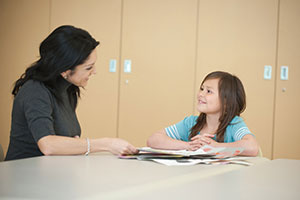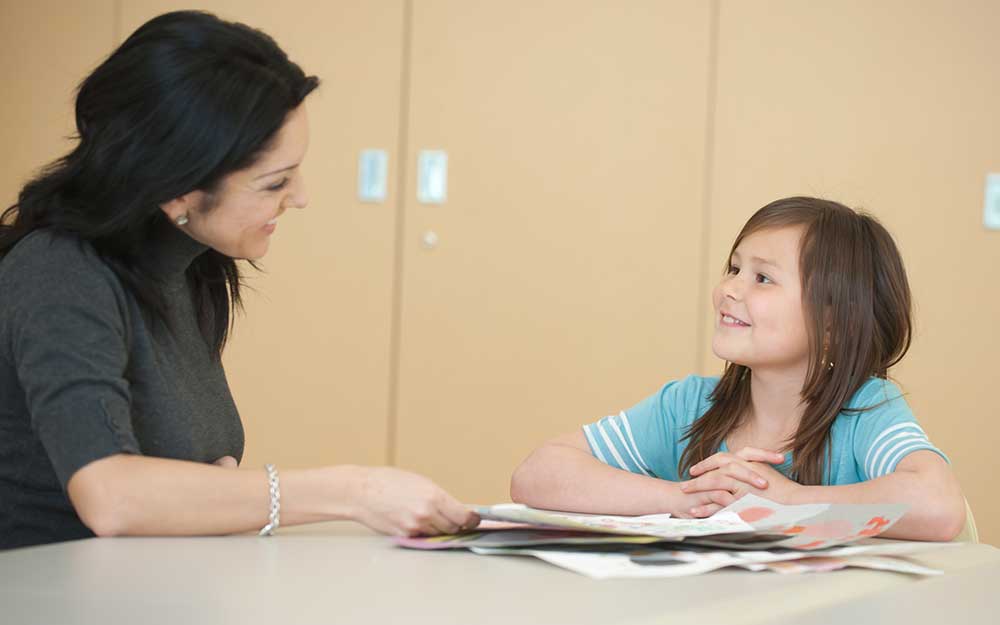
Anxiety disorders are among the most common mental health problems, affecting about one out of eight children. While feeling anxious or even afraid at times is a normal part of childhood, anxiety can become problematic if it begins to impair a child’s ability to function at home or at school on a daily basis. The importance of identifying and treating an anxiety disorder is critical not only in relieving the child’s current distress, but also in reducing the progression into more serious problems when they are older.
What is the difference between anxiety and fear?
We define anxiety as apprehension about a future threat, a feeling of apprehension when danger isn’t imminently present, whereas fear is a response to an immediate threat or a response to imminent danger. Interestingly, anxiety isn’t all bad. Research has shown that moderate levels of anxiety help us perform better on certain performance based tasks such as taking an exam. And certainly if we are faced with a threatening situation it is essential that our body respond in a way that mobilizes our resources so that we may defend ourselves or flee the situation.
Both anxiety and fear involve physical, psychological, and behavioral responses. Physical symptoms can include sweating, blushing, heart palpitations, shortness of breath, or muscle tenseness. The psychological signs may range from worrying about almost everything, to being restless, irritable, tense, or easily tired, and having trouble concentrating. Behavioral signs can include refusing to go to school, being afraid to sleep alone, or engaging in excessive reassurance seeking.
How do kids manage anxiety? How do I know if my child is having problems with anxiety?
Children deal with anxiety in a variety of ways. One of the more common ways is to seek repeated reassurance from their family. The child may repeatedly ask the same question as a way to ease their uncertainty and reduce their anxiety. Unfortunately, because this reassurance is anxiety based the child typically is unsatisfied with the response and will persist. Anxious children may also tend to avoid situations, places or persons who trigger their anxiety. It is not uncommon for a child to avoid school due to anxieties about school performance, social interaction, separating from a parent or other stressful situations such as bullying. Younger children may be clingier with a parent, express distress about sleeping alone, manifest their anxiety through bodily complaints such as headaches and stomach aches, and may be more irritable and oppositional at times. Older children and teens may tend to distract by using video games or TV, isolate, withdraw from formally enjoyed activities and turn to drugs or alcohol to calm the physical symptoms of anxiety.
Are there ways I can help my child cope with anxiety?
Start with the basics, make sure your child has a regular daily routine that includes the proper diet, exercise and sleep. Avoid giving them repeated reassurance; instead encourage them to share their concern and worries and to work with you to problem solve situations. As a parent it is important to be calm and confident for your child, if you are anxious, they may be as well. Some additional ways to help may be:
- Teaching your child that anxiety is a normal reaction to uncertainty and can, in moderate amounts, actually help us to be more prepared and perform better
- Remind them that the physical symptoms of anxiety are normal and are not dangerous anxiety
- Identify a name your child can give anxiety (e.g., Mr. Meany or bully) so that parents, caregivers, teachers and therapists can work together to defeat the anxiety foe.
- Thought challenge them by asking questions (e.g. how many times have a I worried about this and it turned out fine or what would I tell a friend to do in this same situation?)
- Use of positive coping skills such as proper breathing techniques, reading or talking with a friend
One of the most effective ways to help your child manage their anxiety is by encouraging gradual exposure to the feared situation or object. Kids inherently know that to get over any fear they need to confront it. Fortunately anxiety is manageable when you are aware of the symptoms and can respond properly. By providing your child the right tools, they can learn to tolerate their anxiety and recognize when they are worried. With the right information parents and caregivers can assist their child in identifying the problem, work with the child to problem solve potential solutions, increase use of positive coping strategies and turn to professional help if the problem is more severe, complex or impairing than you are able to manage.
For information about kids and anxiety in the classroom, visit our Anxiety in Schools page for a comprehensive set of educational tools, helpful articles, anxiety-reducing exercises, and the new “Anxiety in Schools” podcast series.


